 On Monday, the U.S. national debt eclipsed $31 trillion for the first time in history (see Debt Clocks Tell the Story: Vicious Upward Debt Spiral Gaining Momentum – Take a Look)…That amount can never be paid off and there is no end to the borrowing and spending in sight…
On Monday, the U.S. national debt eclipsed $31 trillion for the first time in history (see Debt Clocks Tell the Story: Vicious Upward Debt Spiral Gaining Momentum – Take a Look)…That amount can never be paid off and there is no end to the borrowing and spending in sight…
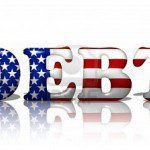 While spending has slowed somewhat with the end of pandemic-era programs, the Biden administration continues to burn through roughly half-a-trillion dollars every single month…and there is more spending coming down the pike.
While spending has slowed somewhat with the end of pandemic-era programs, the Biden administration continues to burn through roughly half-a-trillion dollars every single month…and there is more spending coming down the pike.
 The U.S. government is still handing out COVID stimulus and…continues to shower money on Ukraine and other countries around the world – and we haven’t begun to see the impact of student loan forgiveness.
The U.S. government is still handing out COVID stimulus and…continues to shower money on Ukraine and other countries around the world – and we haven’t begun to see the impact of student loan forgiveness.
 On top of increased spending, rising interest rates will balloon the debt even more. Every increase in interest rate raises the federal government’s interest expense…The Congressional Budget Office…projects interest payments will triple from nearly $400 billion in fiscal 2022 to $1.2 trillion in 2032 and it’s worse than that. The CBO made this estimate in May. Interest rates are already higher than those used in its analysis.
On top of increased spending, rising interest rates will balloon the debt even more. Every increase in interest rate raises the federal government’s interest expense…The Congressional Budget Office…projects interest payments will triple from nearly $400 billion in fiscal 2022 to $1.2 trillion in 2032 and it’s worse than that. The CBO made this estimate in May. Interest rates are already higher than those used in its analysis.
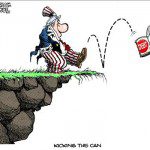 Most people just shrug off the ever-growing national debt. When we talk about the soaring debt, the answer is, “So what?” They figure if it hasn’t mattered yet, it won’t matter tomorrow…but you can only kick the debt can down the road so far before you run out of road.
Most people just shrug off the ever-growing national debt. When we talk about the soaring debt, the answer is, “So what?” They figure if it hasn’t mattered yet, it won’t matter tomorrow…but you can only kick the debt can down the road so far before you run out of road.
 …How will this enormous massive debt actually impact our lives? In the first place, a large national debt stunts economic growth.
…How will this enormous massive debt actually impact our lives? In the first place, a large national debt stunts economic growth.
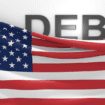 According to the National Debt Clock, the debt to GDP ratio is 125.12%. Studies have shown that a debt-to-GDP ratio of over 90% retards economic growth by about 30%. This throws cold water on the conventional “spend now, worry about the debt later” mantra, along with the frequent claim that “we can grow ourselves out of the debt” now popular on both sides of the aisle in DC.
According to the National Debt Clock, the debt to GDP ratio is 125.12%. Studies have shown that a debt-to-GDP ratio of over 90% retards economic growth by about 30%. This throws cold water on the conventional “spend now, worry about the debt later” mantra, along with the frequent claim that “we can grow ourselves out of the debt” now popular on both sides of the aisle in DC.
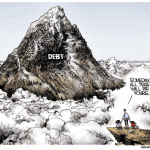 More immediately, the national debt is a big problem for the Federal Reserve as it drives up interest rates hoping to tame inflation. (see Unsustainable Debt-to-GDP Ratio Will Result in (Hyper)inflation )
More immediately, the national debt is a big problem for the Federal Reserve as it drives up interest rates hoping to tame inflation. (see Unsustainable Debt-to-GDP Ratio Will Result in (Hyper)inflation )
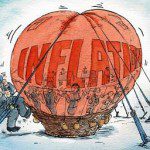 …The central bank can’t slay inflation unless the U.S. government gets its spending under control…[and] this clearly isn’t in the cards. In other words, when it comes to fighting inflation, the Fed is bluffing because it’s holding a losing hand. The rising interest on the…national debt will force the central bank to surrender to inflation.
…The central bank can’t slay inflation unless the U.S. government gets its spending under control…[and] this clearly isn’t in the cards. In other words, when it comes to fighting inflation, the Fed is bluffing because it’s holding a losing hand. The rising interest on the…national debt will force the central bank to surrender to inflation.
 In the long run, unbridled borrowing and spending will drive inflation to the point that people lose faith in the dollar. There is already talk of a “post-dollar” world. (see It Appears Investors Are Losing Faith In the U.S. Dollar)
In the long run, unbridled borrowing and spending will drive inflation to the point that people lose faith in the dollar. There is already talk of a “post-dollar” world. (see It Appears Investors Are Losing Faith In the U.S. Dollar)
 The bottom line is debt isn’t without consequences – and the consequences will be severe when the chickens come home to roost.
The bottom line is debt isn’t without consequences – and the consequences will be severe when the chickens come home to roost.
 munKNEE.com Your Key to Making Money
munKNEE.com Your Key to Making Money
It makes a good case for everyone in goverenment who has anything to do with federal spending, debt, money
creation, and taxation to undergo semi-annual testing of sanity and basic arithmetic.